| Botanical Name |
|
| Family |
Malvaceae - The hibiscus and cotton family. |
| Pronunciation |
|
| Common Name(s) |
English: Hibiscus; Sun hibiscus
|
| Plant Group |
- Shrub A woody plant of relatively low height, having several stems arising from the base and lacking a single trunk; a bush.
|
| Plant Size |
- Medium to Large
| Tree | 15m to 20m |
| Shrub | 2m to 3m |
| Perennial/ground cover | 60cm to 75cm |
| Bulb | 60cm to 1m |
| Succulent | 60cm to 1m |
|
| Position |
- Partial Shade The area is in shade for part of the day and in full sun for part of the day.
- Sun The area is in full sun for all or most of the day, all year round.
|
| General Information |
- Drought Tolerance: Moderate The plant is moderately adapted to arid conditions and can survive short periods of drought and high temperatures without extra water.
- Evergreen to semi-deciduous The plant is evergreen in warmer, wetter parts of the country, but may lose some of its leaves during winter in colder, drier situations.
- Frost: Half-hardy The plant is able to survive low temperatures and some frost but requires protection against severe frost.
- Prune hard after flowering Fast growing shrubs that grow lanky within a season. Cut off branches and stems of these plants to a third of their original length. This will increase the yield of flowers, improve the plants shape and enhance the structural strength of main branches.
- Water Moderate These plants will need some extra watering compared to water-wise plants. Plant them together, in at least some shade and in a convenient proximity to the house so that grey water can be utilised during times of drought.
|
| Specific Information |
Hibiscus calyphyllus is a large shrub with large, soft and velvety light green leaves and stems and an attractive rounded shape, giving it a tropical appearance. The stems are exceptionally strong and are not easily broken.The seed capsules are also hairy and split open to reveal small, dark brown seeds. The shrub is multi stemmed from the base. It grows best in temperate areas that are neither too hot and dry nor too cold and frosty.
|
| Ad Break |
|
| Flowers |
| Description |
cup-shaped up to 100 mm across with a dark maroon to black center and large, delicate-looking petals
|
| Season |
- All Year Plants will seldom bloom for the entire season as given in the list, but should flower during a period within these parameters.
- Summer to Autumn Plants will seldom bloom for the entire season as given in the list, but should flower during a period within these parameters.
|
| Colour |
|
| Growth Rate |
- Moderate to Fast Specifying growth rate can be very misleading as there is considerable variation of growth rate depending on type and species of plant, available water, supplementary feeding, mulching and general care, as well as the plants suitability and adaptability to the garden environment.
|
| Plant Uses |
- Accent or Focal Point A plant used to attract the attention because of its colour or form.
- Attracts bees, butterflies or other insects This plant attracts insects which can be food for birds or other creatures in your garden.
- Attracts Birds This plant will attract birds.
- Border A strip of ground, at the edge of a driveway or path in which ornamental plants or shrubs are planted.
- Boundary A plant useful for planting around the edges of the property to form a green or colourful backdrop, an impenetrable hedge, to hide walls or create privacy.
- Filler Either a fast growing tree or shrub used temporarily to fill in an area while the permanent plants grow to a desired size, or a plant used to fill gaps in borders or beds.
- Suitable for coastal gardens Plants adapted to dry, sandy soil, forceful wind, limited rainfall and intense sunlight.
- Wild Garden An indigenous garden planted for the benefit of wildlife and birds. Provides food, water, a variety of mini-biomes and no poisonous chemicals are used.
|
| Distribution and Habitat |
In the provinces of the Eastern Cape, KwaZulu-Natal, Mpumalanga, Free State, Gauteng, Limpopo and North West, to tropical East Africa and Madagascar, in open bush, thickets, forests, and along rivers.
|
| Planting Suggestions |
For verdant growth, plant in full sun or light shade in good, well-drained garden soil enriched with compost and organic material and water regularly. Find a sheltered spot if you have regular frost and protect the shrub in winter for a year of two. Too much shade will negatively affect flower production. For an informal border, a number of plants can be used, or a single plant could be used as a focal point. It can become lax with age so it is a good idea to prune it back after the main flowering season to encourage bushiness.
Hibiscus callyphyllus grows readily from ripe seed collected off the plant and sown in early spring . I have also had much success with stem cuttings taken in both late summer and late winter.
|
| Lorraine's Garden Notes |
The appearance of the leaves can be misleading - they look velvety but the hairs are rather coarse. Before pruning I don long sleeves and have to shower immediately afterwards as the fine hairs are highly irritant and get in everywhere.
|
| Medicinal Uses |
The flowers of Hibiscus callyphyllus are reportedly eaten in the Okovango Delta during times of food shortage.
|
| Ad Break |
|


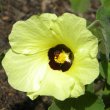
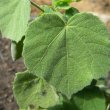
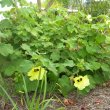
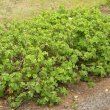
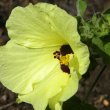


Comments
ll information on Hibiscus calyphyllus
Is it edible? Does it have any use
Hibiscus calyphyllus
Hi Mary
I haven't found any information as to whether this plant is edible or if it is used medicinally or any other way. The leaves and stems are covered with tiny, sharp hairs which cause some irritation but I have found no warnings that the plant is poisonous in any way.
Regards
Lorraine
Hibiscus calyphyllus
The information above was very helpful but is it irritant to the skin even when dried. It caused itching on touch. Also, can i upload a picture of this plant for confirmation if it is the same as the Hibiscus species you know? Thank you
Hibiscus calyphyllus - keep away from those fine hairs
Hi Mary
I had to prune my bushes back recently and did not wear protective clothing - an irritating error! I had prickles in every nook and cranny and the clothes I wore now have prickles worked into the fabric.
Do send pics of your plant. Just attach them to an email at kumbulanursery@gmail.com and I will see if I can help.
Kind regards
Lorraine
Downloaded picture
I have sent the picture of the plant and flower as you requested to your mailbox. Anxiously awaiting a reply/ Thank you
Hibiscus calyphyllus
Hi Mary
The hibiscus you have certainly appears to be Hibiscus calyphyllus. Both the one on my website as well as the one you have, have been identified as Hibiscus calyphyllus, although to me they look like different species. The one on the website has drooping flowers that are a bit bigger than those of yours, but often plants in different areas do look different from each other. I grew seeds of Hibiscus calyphyllus from a seed company, and the plants look exactly the same as yours.
Kind regards
Lorraine
Appreciation
Thanks for your assistance.
Discuss this plant
Share knowledge, ask a question or give an experience.